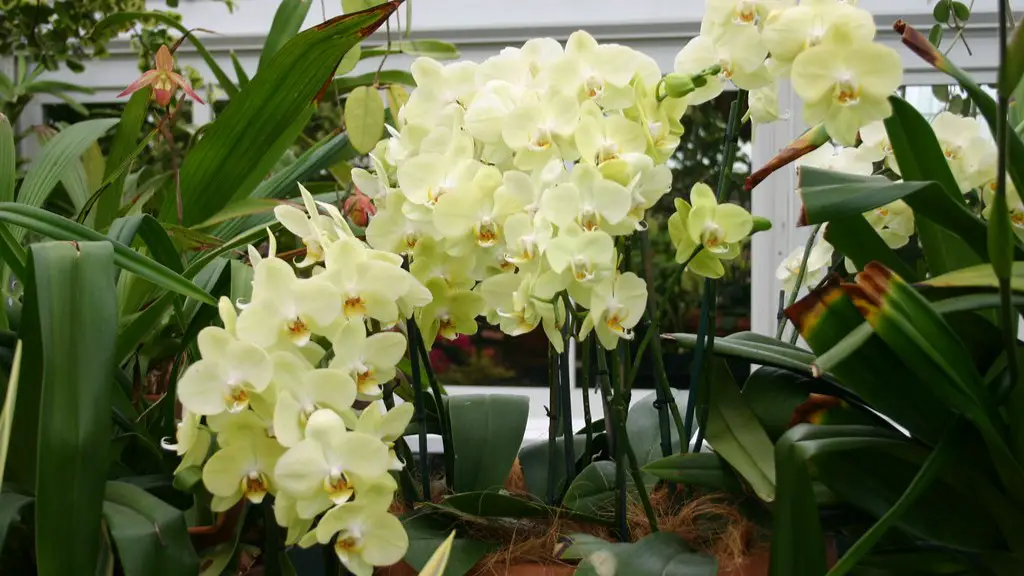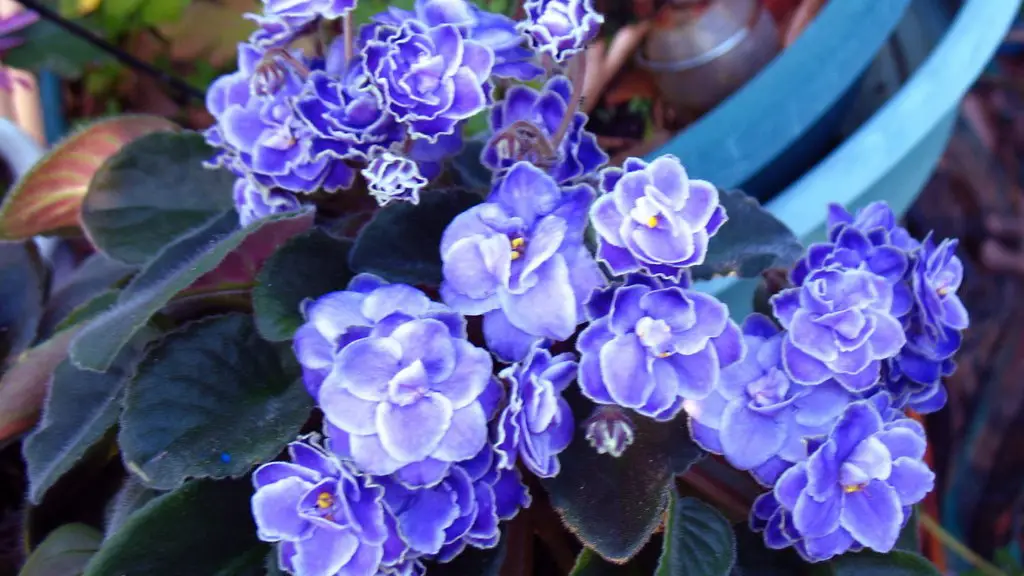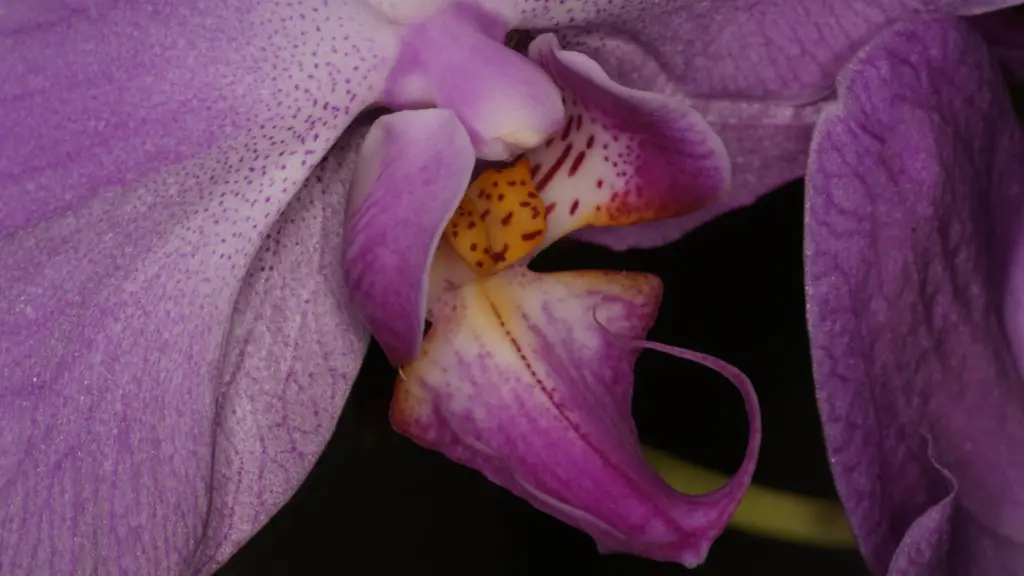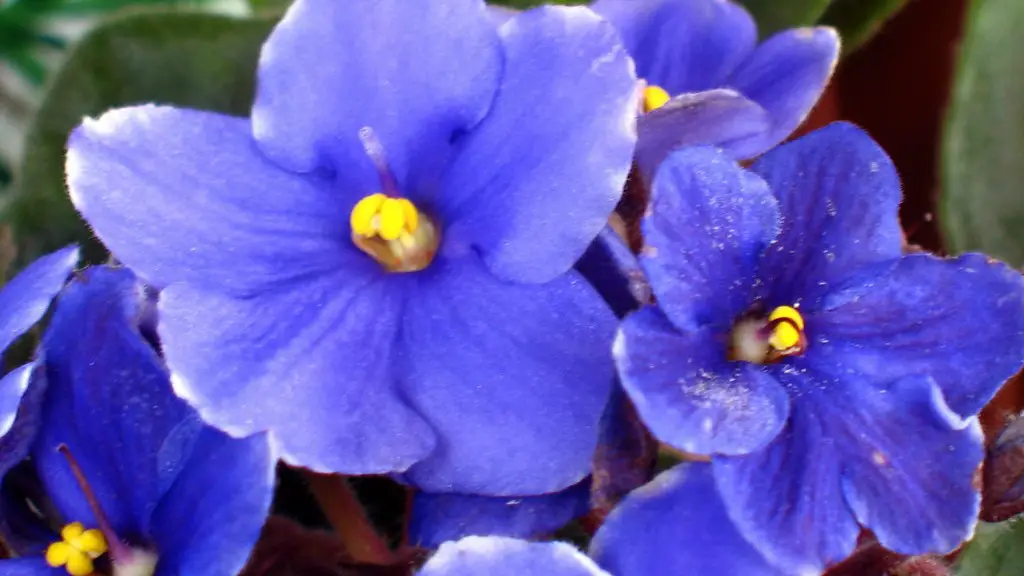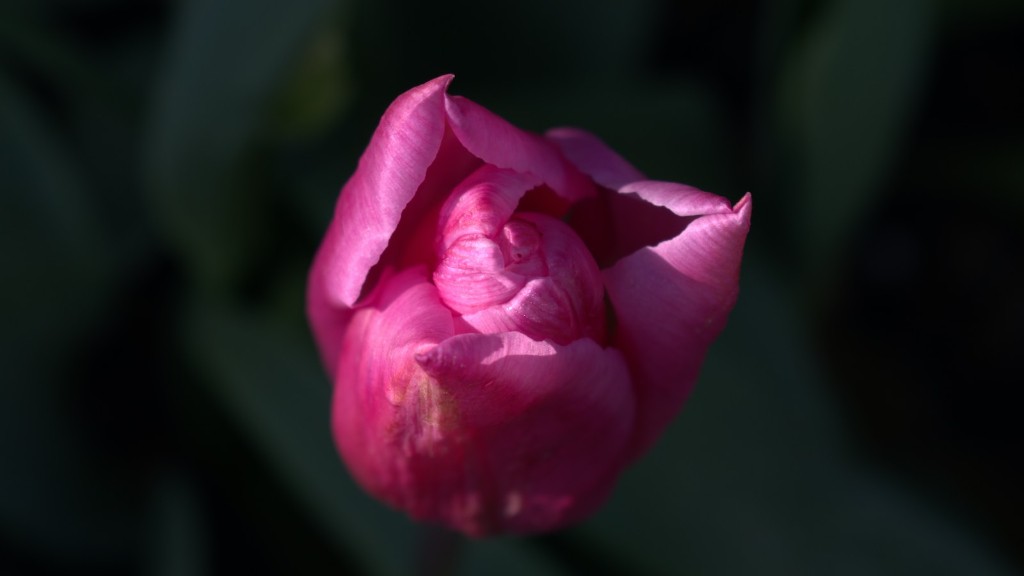A Phalaenopsis orchid is a beautiful and relatively easy to care for plant that can bloom for several months at a time with the proper care. Native to Southeast Asia, these orchids are found in a variety of colors including white, pink, yellow, and purple. The following tips will help you take care of your own Phalaenopsis orchid so that it will thrive and bloom for years to come.
More specifically, here are six tips on how to take care of your Phalaenopsis orchid:
1. Light – Phalaenopsis orchids thrive in bright, indirect sunlight. If you live in a warm climate, filtered sunlight is best.
2. Water – Water your orchid when the potting mix is dry to the touch. Be sure to use room-temperature water, and never let the orchid sit in water.
3. Temperature – Most Phalaenopsis orchids prefer daytime temperatures of 75-85 degrees Fahrenheit and cooler nighttime temperatures of 60-70 degrees.
4. Humidity – These orchids like humid conditions, so mist the leaves frequently or set the pot on a tray of pebbles and water.
5. Fertilizer – Once a month, fertilize your orchid with a balanced fertilizer made specifically for orchids.
6. Repotting – Repot your orchid every 12-18 months, using a potting mix made especially for orchids.
How do you keep Phalaenopsis orchids blooming?
Phalaenopsis orchids are known for their ability to thrive in indirect sunlight, compared to other types of orchids. They should be placed near a window with filtered sunlight, and watered every 7-10 days. They prefer typical household temperatures, and should be fertilized every month. To raise the humidity, you can place the pot on a tray of pebbles and water. Trim any faded flower stalks to encourage new growth.
If your phal is potted in bark, watering once a week is generally sufficient. If your plant is potted in moss, water when the top feels dry. The amount of light and heat your plant receives will also affect how soon your phal needs watering. Summer months will need more frequent watering, winter will need less.
How do you take care of a Phalaenopsis orchid after the blooms fall off
Orchids are a beautiful and popular type of flower, but they can be a bit tricky to care for. Here are 5 tips to help you keep your orchid healthy and happy:
1. Water weekly. Just because your orchid no longer has its blooms doesn’t mean you should stop watering it.
2. Fertilize regularly. Give your orchid the nutrients it needs to stay healthy and bloom again.
3. Give it plenty of indirect light. Orchids prefer bright, indirect light.
4. Move your orchid to a cooler room. Orchids like it cool, so if your home is too warm, move your orchid to a cooler room or even the refrigerator!
5. Give some life to your dormant orchid. If your orchid hasn’t bloomed in a while, you can try giving it a little life by repotting it or moving it to a new location.
Orchids are tropical plants that prefer warm temperatures between 60 and 80 degrees Fahrenheit. Avoid drafts, cold spaces, rooms with sudden temperature drops and hot air vents. Orchids flourish in air that is 50 percent humidity or above. They can do well in moist places such as by a kitchen window.
Should I mist my Phalaenopsis orchid?
Orchids love humid conditions because they’re a tropical plant. The easiest way to recreate their humid home is by misting them with a spray bottle.
Most phalaenopsis species are native to areas close to the Equator and do not need a specific photoperiod to induce flowering. Instead, it is the low temperature that triggers phalaenopsis to start the flowering process.
Should orchids be watered from the top or bottom?
Orchids are a beautiful, blooming plant that make a great addition to any home. They do require a bit of extra care, however, to make sure they stay healthy and bloom. One important thing to remember is that orchids should never have their roots sitting in water. The best way to water an orchid is to set the pot on top of a tray or saucer filled with pebbles and water. Make sure the water level is below the bottom of the pot, so that the roots are not sitting in water. The water will evaporate and help to humidify the air around the plant, which is great for orchids.
Your orchid needs just the right amount of water to stay healthy and thrive. You’ll know it’s getting enough water if the leaves are shiny and firm, and the roots are firm and green. If your orchid isn’t getting enough water, the roots will become dark and dry. And if it’s getting too much water, the roots will become yellow, brown, or hollow/flat.
What is the proper way to water orchids
When watering your plant, the best place to do it is in the kitchen sink. Use lukewarm water (do not use salt softened or distilled water) and water your plant for about 15 seconds. Be sure to thoroughly wet the media. Then allow the plant to drain for about 15 minutes. It may appear dry but it has had enough water.
The flowers of a phalaenopsis orchid usually bloom for several months, and the plant can be pollinated again during this period. It can take anywhere from 9 to 14 months for an orchid to complete a life cycle. If it does not die, it can typically re-bloom once every 8 to 12 months.
Can an orchid come back after losing all leaves?
Orchids are a beautiful and unique addition to any home or garden, and they can definitely provide a lifetime of enjoyment with the proper plant care. They are known for their ability to rebloom on the same old flower spike as long as it is still green, and you can also decide to cut the old bare flower spike back to a node to promote bushy and lush foliage. With proper care, your Orchids can definitely provide you with a lifetime of enjoyment!
Assuming you want tips on how to get your orchid to rebloom:
Orchids are a bit finicky when it comes to getting them to rebloom, but there are a few things you can do to encourage it. Continue to water your orchid with 3 ice cubes once a week. This will help keep the roots hydrated and healthy. Fertilize your orchid once or twice a month using a balanced houseplant fertilizer at half strength. This will help give the plant the nutrients it needs to thrive. Put your orchid in a cooler spot at night; this will mimic the cool, humid conditions that orchids grow in the wild and help encourage blooming.
What does an orchid look like when it needs to be repotted
If you notice your orchid’s roots pushing up against the pot or reaching out into the air, it’s time to re-pot the plant. Orchids prefer a small pot, so that their roots can weave through the compost as they grow. However, eventually they will run out of room and need a larger pot. Re-potting your orchid will give it the space it needs to continue growing and thriving.
Orchids are best grown in south or east-facing windows. West windows are usually too hot, while northern windows are too dark. If you can’t find a good location to grow your orchids, artificial lights are the last resort.
How often should you soak an orchid?
To water your orchid, soak the plant in a bowl of water once every week or two. Allow the plant to soak for a few minutes, then remove and let dry. The moss should be moist, but not soggy. If it becomes too dry, the orchid can suffer.
It is important to water your orchid properly in order to ensure healthy growth. For best results, soak the plant for about 10 minutes to saturate the roots, then allow the water to drain out completely. Orchids like a good soak, but they don’t tolerate sitting in water, so be sure to empty the pot after watering. Uneven watering can result in shallow or uneven root growth, so be sure to water evenly around the plant. After watering, feel the weight of the container to make sure it is heavy – this indicates that the plant has received enough water.
What part of an orchid do you mist
It is important to raise the humidity around your orchid to prevent the leaves from drying out. One way to do this is to spray the leaves and roots with a fine mist every morning. Hold the nozzle about one foot away from the plant and make sure to cover all sides of the orchid. Do not saturate the leaves, and repeat as needed.
The best way to care for moth orchids is to keep them warm, in good light, and water them regularly. You should also re-pot them every couple of years. Occasionally, you can wipe the leaves with a damp cloth to remove any dust. Moth orchids often form roots above the compost that look like they’re trying to clamber out of their container.
Conclusion
There are a few things to consider when taking care of a Phalaenopsis orchid. Light, water, and fertilizer are the main areas of focus.
Phalaenopsis orchids thrive in bright, indirect sunlight. They should never be placed in direct sunlight, as this can scorch the leaves. If the leaves start to turn yellow, this is a sign that the plant is getting too much light.
Watering is the most important part of taking care of a Phalaenopsis orchid. The plant should be watered every one to two weeks, making sure that the potting mix is evenly moistened. It is important to never let the potting mix dry out completely, as this can damage the roots. It is also important to never overwater the plant, as this can lead to root rot.
Fertilizing is also important for keeping a Phalaenopsis orchid healthy. The plant should be fertilized every two weeks with a half-strength fertilizer. It is important to never over-fertilize the plant, as this can damage the roots.
Taking care of a Phalaenopsis orchid is not difficult, but there are a few things to keep in mind. Water the plant regularly, but be sure to allow the soil to dry out between watering. fertilize the plant monthly, using a weak fertilizer solution. Place the plant in a bright, indirect light. and be sure to keep the temperature consistent. With a little care, your Phalaenopsis orchid will thrive.
